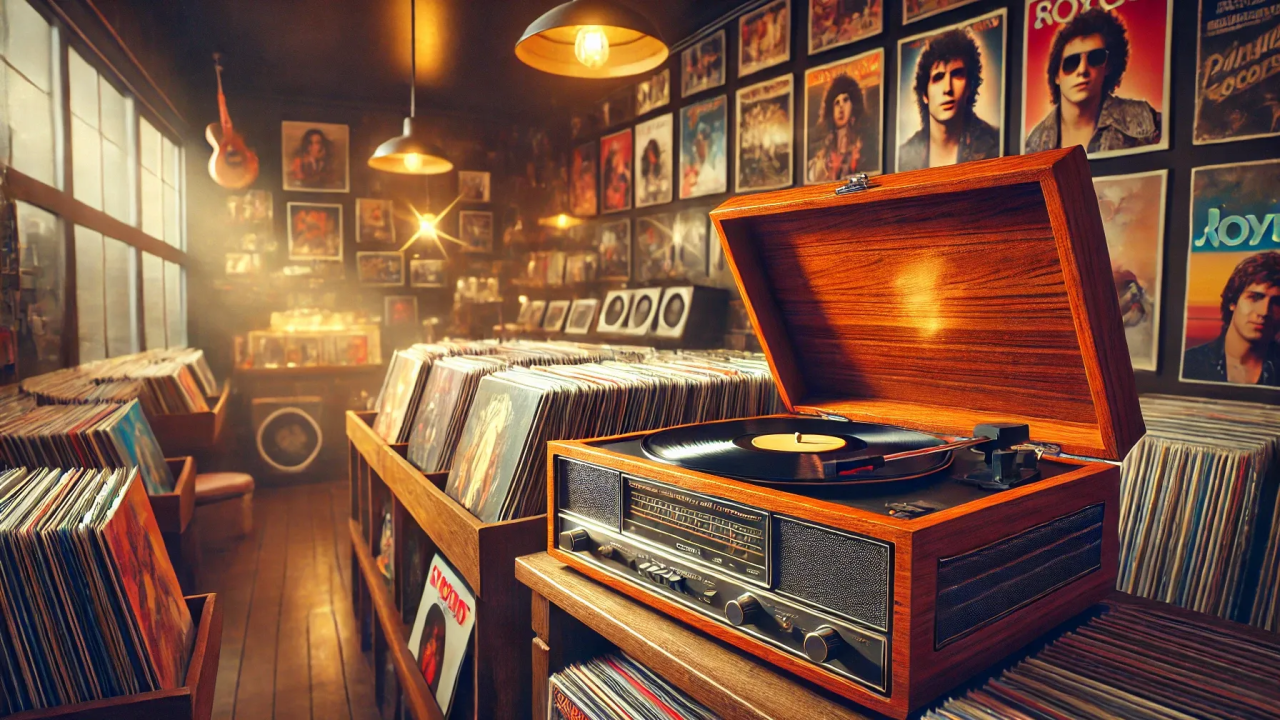The journey of music consumption has been shaped by rapid technological advancements. From the crackling warmth of vinyl records to the instant accessibility of streaming platforms, technology has revolutionized the way we create, distribute, and experience music. Here’s a closer look at this transformation.
1. The Vinyl Revolution
Introduced in the late 1940s, vinyl records were a game-changer for music. They allowed for the storage of entire albums, transforming how music was consumed. Vinyl’s analog sound quality became a hallmark of the era, and record players became household staples.
2. The Rise of Cassettes and Portability
The 1970s saw the introduction of cassette tapes, which brought music portability into the spotlight. With cassette players and the iconic Sony Walkman, people could now carry their favorite tunes wherever they went. Tapes also made it easy to create personalized mixtapes, a precursor to today’s playlists.
3. The Compact Disc (CD) Era
The 1980s welcomed CDs, offering superior sound quality and durability compared to vinyl and cassettes. CDs revolutionized music storage, allowing listeners to skip tracks with ease. By the 1990s, CD sales dominated the music industry, replacing previous formats.
4. The Digital Age: MP3s and File Sharing
The late 1990s and early 2000s marked the dawn of digital music with the introduction of MP3 files. Platforms like Napster and LimeWire made file-sharing popular, though controversial. This era shifted the industry toward digital consumption, sparking debates over piracy and artist compensation.
5. The iPod and the Era of Digital Libraries
Apple’s launch of the iPod in 2001 transformed how people managed their music. Paired with iTunes, users could store thousands of songs in a pocket-sized device. This innovation laid the groundwork for the digital music ecosystem we know today.
6. The Streaming Revolution
The emergence of platforms like Spotify, Apple Music, and YouTube in the late 2000s and 2010s marked the biggest shift in music consumption. Streaming offered unlimited access to vast music libraries for a monthly fee, making physical formats nearly obsolete. Playlists, algorithms, and personalized recommendations became integral to how listeners discovered music.
7. Technology and Music Production
Advancements in technology have also revolutionized music production. Artists now have access to sophisticated digital audio workstations (DAWs), synthesizers, and software that make creating high-quality music possible from home studios.
8. Social Media and Music Discovery
Platforms like TikTok, Instagram, and YouTube have become crucial for music promotion and discovery. Viral trends can turn unknown songs into global hits overnight, further democratizing the music industry.
9. The Revival of Vinyl
Interestingly, vinyl has made a nostalgic comeback in recent years. Collectors and enthusiasts appreciate the tactile experience and warm sound that vinyl offers. This resurgence shows that while technology evolves, traditional formats still hold a special place.
10. The Future of Music Consumption
As technology advances, innovations like virtual reality concerts, AI-generated music, and blockchain-based royalty systems are poised to reshape the industry further. The possibilities for creating and experiencing music seem limitless.
Conclusion
The transformation from vinyl to streaming reflects how deeply intertwined music is with technological progress. Each era has brought new ways to experience music, enriching our relationship with sound and creativity. As we embrace the future, one thing remains constant: music will continue to evolve and inspire.
Topics: Digital Music Evolution of Music Future of Music MP3s Music Consumption Music History Music Production Music Technology Streaming Platforms Vinyl Records














